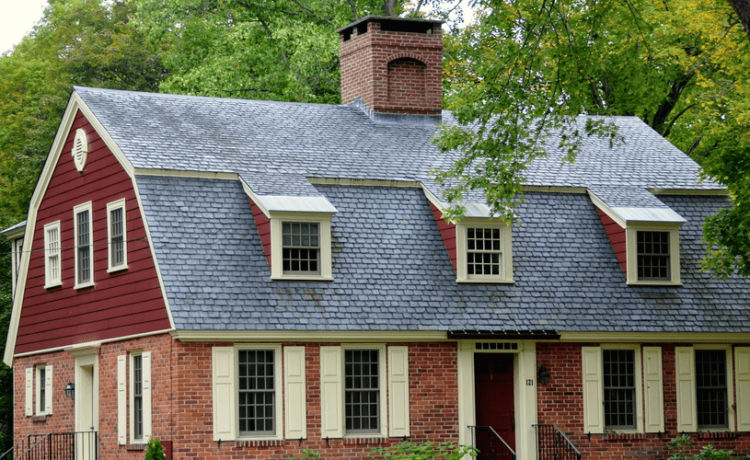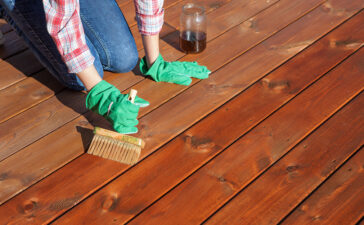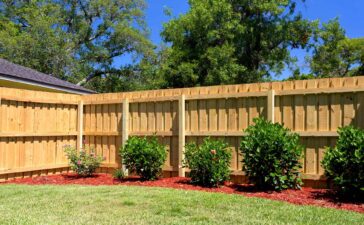In this article, we will take you through various insightful techniques to build a Gambrel roof, each highlighting different aspects of its design, construction, aesthetics, and functionality. Whether you are an architect, a homeowner looking to add a touch of elegance to your property, or an enthusiast fascinated by historic structures, these tips will be an invaluable resource to help you understand the steps involved in the Gambrel roof construction.
From the different types of tiles to the wooden elements, discover the artistry and craftsmanship behind the Gambrel roof. From learning about the various frames to roofing materials, get ready to uncover the secrets behind this iconic roof style and equip yourself with the knowledge to embark on your roof-building project.
What is a Gambrel Roof?

A gambrel roof is a unique architectural feature defined by its symmetrical design with two angled slopes on each side. Unlike a regular roof, the gambrel roof has steeper lower slopes and shallower upper slopes, allowing for increased interior space without compromising on structural integrity. The term “gambrel” is derived from the Latin word “gamba,” meaning “horse’s leg.” This roof style has a rich history and can be traced back to the construction of the second Harvard Hall in 1677, making it one of the oldest known examples of a gambrel roof in America.
The gambrel roof offers several advantages. Its design facilitates efficient water drainage, preventing water accumulation, potential damage, or rot in the structure.
Additionally, the increased usable space in the upper level of the building makes it a practical choice as a storage facility. With its historical appeal and functional benefits, the gambrel roof continues to be a popular choice for many people, being seen in many new barns and sheds. Let us look at the different and creative ways to build a gambrel roof yourself.
Build a Gambrel Roof: An Architectural Wonder
1. Plan and Design

Every construction or building project requires careful and intricate planning. You need to have a clear vision of your roof and a methodical approach. You should plan out every step, from choosing the material to laying the framework to setting the roof. Thoroughly considering these aspects sets the foundation for a successful construction process and ensures that the final result meets your expectations. During the planning phase, take into account the purpose and size of the structure, as well as any local building codes and regulations. Determine the angles, height, and other design elements that will influence the overall appearance and functionality of the gambrel roof. Create detailed blueprints or work with an architect to translate your vision into a comprehensive plan.
Designing a gambrel roof involves making decisions about materials, structures, and aesthetic features. Carefully select the appropriate materials for the framing and roof covering, ensuring they are suitable for your climate. By investing time and effort into effective planning and design, you can lay a solid foundation for a beautiful roof, resulting in a visually appealing and functional roof.
2. Browse the Different Styles

Although to the modern eye, all gambrel roofs look the same. They come in a variety of shapes and styles. By browsing different designs, you can choose one that suits your taste and matches the aesthetic of your home. A classic roof can be seen on many modern barns and farmhouses. A valley-style roof can have up to eight slopes! A mansard roof gives a French aura to your home, while a Dormer style gives you two protruding windows.
While browsing, consider the specific features that appeal to you, such as roof shape, proportions, and decorative elements. These observations will help you choose your preferences and affect your final design choices. By exploring a variety of options, you can create a distinctive gambrel roof that reflects your vision and architectural preferences.
3. Choosing the Right Materials

If you care for the longevity, functionality, and overall aesthetic of your gambrel roof, then choosing the right materials becomes vital. You may consider the following factors when taking your pick.
First, opt for high-quality roofing materials that are durable and weather-resistant. Some common choices are asphalt shingles, metal roofing, or wood shingles for a traditional look. Gauge them by their lifespan, maintenance requirements, and compatibility with your local climate.
Next, select suitable materials for the roof framing and sheathing. There are many choices available, like traditional lumber, engineered wood products, or steel framing systems. These materials should provide strength and stability for the roof structure.
Lastly, choose quality gutters, downspouts, and trim materials that complement the overall design and protect against water damage.
4. Framing the Roof

Framing your gambrel roof is a critical step that requires careful planning and execution. The framing provides the structural support and stability necessary for the roof to withstand various loads and environmental factors. Consider factors such as the roof pitch, span, and desired ceiling height to determine the optimal framing configuration. Various safety precautions must be followed during the process.
Commonly used framing materials include traditional lumber, engineered wood products, or steel. Each material has its benefits and considerations, such as strength, cost, and availability. Ensure that the chosen materials meet local building codes and regulations. When framing the roof, accuracy and precision are crucial. Use precise measurements, leveling tools, and proper techniques to ensure the roof is built correctly. You must also pay attention to the connections between frames, such as rafters and ridge beams, ensuring they are securely fastened.
5. User Modern Equipment

Using the latest equipment offers significant advantages when building a gambrel roof. One important upside is increased efficiency. Power tools, nail guns, and electric saws enable faster and more precise cuts, reducing manual labor and saving time. Modern equipment also helps in accuracy and precision. Advanced measuring devices allow for precise measurements and alignments, resulting in accurate angles, cuts, and smooth edges. This results in a high-quality finished roof.
Another area modern methods succeed in is safety. Modern tools often come equipped with safety features that minimize the risk of accidents and injuries. Safety guards help prevent mishaps and reduce strain on workers, creating a safer work environment. Additionally, offers greater accessibility and versatility. Aerial lifts and scaffolding systems provide safe access to elevated areas, reducing human intervention and effort.
6. Water Drainage

Proper drainage is vital for maintaining the integrity, sturdiness, and longevity of a gambrel roof. Efficient water drainage prevents water from gathering and damaging the roof structure. One good aspect of effective water drainage is the roof pitch. The pitch of a gambrel roof helps in water runoff. A steeper slope promotes faster water drainage, reducing the risk of leaks. Another aspect to consider is the installation of gutters. These components help direct water away from the structure’s foundation. Regular cleaning and maintenance of gutters are essential to prevent clogging.
Roof overhangs can also contribute to water drainage. Adequate roof overhangs help direct water away from the exterior walls, providing additional protection. Choose overhangs of an appropriate size to help divert the water.
7. Add Ventilation

Proper ventilation is required to maintain a fresh atmosphere inside a gambrel roof structure. Ventilation helps regulate temperature, control moisture, and prevent the buildup of stale air. You can incorporate it into your roof through various methods. One effective approach is the installation of ridge vents along the peak of the roof. Ridge vents allow hot air to escape from the roof space, promoting airflow and preventing the buildup of heat. Additionally, soffit vents provide fresh air intake, allowing for proper circulation throughout the structure. Gable vents are another option for ventilation.
It is crucial to determine the appropriate placement, size, and quantity of ventilation components for optimal airflow. By ensuring adequate ventilation, you can maintain a comfortable and healthy environment and prevent molds and fungi from growing.
8. Ensure Insulation

Every home requires efficient levels of insulation to protect people from the elements. Good insulation offers numerous benefits for your gambrel roof, providing comfort, heat, and moisture control. Choosing the right insulation material is a key factor in this process. Various insulators, such as fiberglass, cellulose, foam board, and spray foam, provide different levels of thermal resistance. It’s important to install the material evenly throughout the roof, covering walls, ceilings, and crawl spaces.
You should be careful and seal any gaps or openings in your gambrel roof. Insulation also contributes to energy efficiency, reducing heating and cooling costs. As a bonus, it helps with soundproofing, creating a quieter living environment.
9. Seek Professional Help

Seeking professional help when building a gambrel roof is highly recommended to ensure a successful and safe construction process. Hire professionals who possess the expertise and experience needed to work on roof design, structural integrity, and local building codes. They can provide valuable insights, offer customized solutions, and address any challenges that may arise.
Professional workers can assist with planning, design, material selection, and construction techniques specific to gambrel roofs. Their knowledge and skills help ensure that the roof is built with all the laws in check, meets safety requirements, and withstands the test of time. By enlisting the help of professionals, you can rest easy and build a well-constructed and beautiful gambrel roof.
10. Reinforce the Roof

If you want a gambrel roof that lasts for years to come, reinforcing it is the way to go. It is a critical step in building a sturdy and durable structure. Reinforcements provide additional strength and support, ensuring the roof can withstand various weather conditions and structural loads. Common methods of reinforcement include adding trusses or gussets, using structural bracing, or using steel elements.
Reinforcements help distribute the weight evenly, minimize sagging, and enhance the overall stability of the roof structure. A reinforced roof provides safety to homeowners by making the structure sturdy and durable. By reinforcing the roof, you can enhance its structural integrity and ensure its long-lasting performance.
Advantages and Disadvantages of Gambrel Roof
|
Advantages |
Disadvantages |
|
A gambrel is relatively easy to build, even though it looks complicated. |
It is prone to uneven damage since many angles face different sides and a subject to weathering. |
|
They give off a classic and luxurious vibe that modern houses cannot match. |
Due to its design, it is susceptible to wind damage. In case of a storm, the whole roof can be lifted off the house. |
|
The design provides a lot of extra storage space that can be utilized well. |
Adding a gambrel roof to an existing structure is a huge challenge as the support may not be present. |
|
The slopes ease rainwater slide off the roof, preventing leakage or damage. |
They become a problem when it snows. The top part has a gentle slope that can collect snow that is difficult to remove. |
|
Since there are no supporting beams, it is a cost-effective solution that works if you have a low budget. |
The design makes for a very uneven storage area, as there is less space near the edges. |
Conclusion
The gambrel roof sits proudly as an architectural wonder, full of historical significance and modern functionality. By exploring the various ways to construct this unique roof style, you are well-versed in the intricacies of its design. We have shed light on how this structure is engineered and the artistry behind it.
From the traditional framing techniques to the use of modern materials, such as metal or shingles, we have witnessed the versatility and adaptability of the Gambrel roof. Whether it adorns a traditional Dutch home or adds a touch of timeless charm to a contemporary structure, this roof style continues to captivate and inspire in modern times.
With this knowledge, aspiring architects, homeowners, and enthusiasts alike can embark on their own Gambrel roof construction projects. With careful planning, attention to detail, and a touch of creativity, anyone can create a stunning architectural masterpiece that embodies the colonial charm of this roof.
Safety during any kind of construction should be of utmost concern. Always use helmets and gloves, and other protective gear.
Frequently Asked Questions
How Many Years Do Gambrel Roofs Last?
The longevity of a gambrel roof depends on the quality of the materials, the maintenance, and external conditions like weather. A well-maintained roof can last up to a hundred years. Different materials like metal and asbestos have different lifespans.
What Type of Structures Have Gambrel Roofs?
In modern days, farm buildings like barns and sheds usually have a gambrel roof. They are a common occurrence in traditional Dutch homes. Most modern houses do not typically use these roofs as they don’t match the aesthetic.
Are They the Same as Mansard Roofs?
Gambrel roofs are structurally and aesthetically different from Mansard roofs. A Mansard roof has curved angles on all four sides, while a gambrel roof has symmetrical slopes on two sides. A Mansard roof has a far more complex and intricate design.








